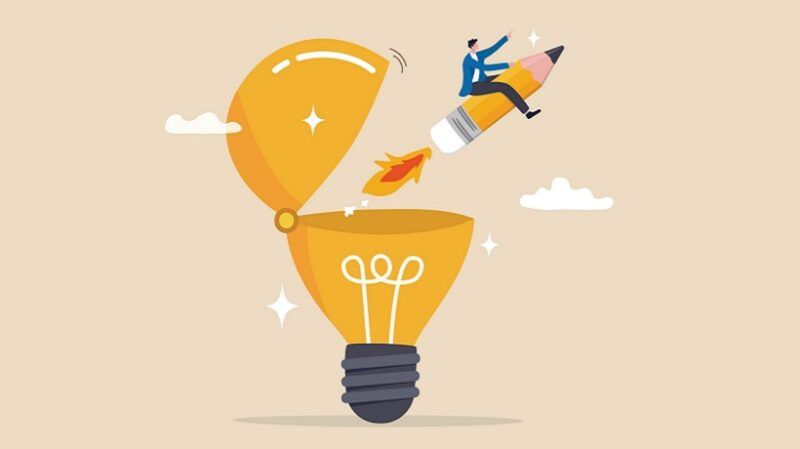The Power Of L&D For Innovation

7 Ways L&D Teams Can Build Innovation Capabilities
Innovation. To many, it has become something of a buzzword, but it is much more than that. In today’s rapidly changing business landscape, companies must continuously adapt and innovate to stay competitive and deliver results. But innovation doesn’t just happen. It takes partnerships between many stakeholders, including Learning and Development (L&D) teams.
In many workplaces, the L&D team is usually brought in after solutions are generated. Their main role in these cases is to assess skill gaps and help employees develop new knowledge and skills for implementation. While this is an essential part of an effective change management strategy, L&D teams can provide much more value when they are also involved in building business innovation capabilities.
Ways Learning And Development Teams Can Improve Business Innovation
1. Foster A Workplace Culture That Supports Creativity
Organizations with high performing learning are 92% more likely to innovate [1]. A culture of continuous learning is one that values, prioritizes, and encourages workplace learning. It supports innovation by cultivating a growth mindset and providing an environment that fosters creativity. Changing a workplace culture takes time and requires support amongst all levels of leadership, but it is worth the effort. L&D teams can play a large role in identifying and implementing strategies to develop a culture of learning.
2. Facilitate Critical Thinking To Support Innovation
Problem-solving and critical thinking are two crucial skills that support creativity and innovation. These can help employees identify and address challenges and find opportunities to innovate. However, generic courses focused on problem-solving are not enough. Rather, L&D teams will have much more impact if they focus on critical thinking in the context of performance and provide opportunities for employees to work on real-world problems or participate in activities that encourage them to think creatively.
3. Provide Opportunities To Experiment With Technology
The right resources and technology can empower employee creativity and innovation. As the pace of technological change continues to accelerate, employees have access to more virtual tools than ever. Depending on how well employees understand these tools, their capabilities, and their limitations, they can either promote or hinder innovation.
Experimentation, coupled with feedback and coaching, is a key part of developing new technological skills. L&D can help support employees by providing opportunities to experiment in a safe and supportive environment. This is especially true in a group setting where employees can practice using technological tools to collaborate and share information and ideas.
4. Develop Design Thinking Abilities Across Your Organization
Design thinking can help employees and teams generate better ideas, create alignment with customer needs, and more [2]. It’s a nonlinear process that combines creative and analytical thinking to find innovative solutions to problems. If an organization doesn’t currently use design thinking on a large scale, L&D teams can help select a vendor to work with to provide training to leaders and employees. L&D teams can also help employees apply what they’ve learned after the training, by ingraining design thinking in the L&D team’s own work.
5. Enhance Leadership And Management Capabilities
Innovation requires dynamic managerial capabilities which includes managerial cognition, social capital, and human capital. These three dimensions can impact how effectively managers respond to internal and external challenges. It can also influence their decision making, strategic change, and organizational performance.
Leaders and managers also need to be able to provide an environment that supports creativity and innovation. Some examples include providing a psychologically safe and inclusive environment where employees are comfortable sharing ideas, acknowledging and incentivizing creativity, setting clear processes that support innovation, and providing feedback and guidance. L&D teams can help managers and leaders build these capabilities and skills by assessing needs and developing learning solutions when appropriate.
6. Expand And Strengthen The Knowledge Network
Knowledge is one of the most significant strategic resources a business has for innovation [3]. Innovation involves many interactions and centers on a learning process where employees draw knowledge and information from many sources. These knowledge flows, to and from internal and external sources, create a knowledge network.
Most organizations have a knowledge management system of some sort, whether it is a simple team SharePoint site or an enterprise-wide platform with many features and capabilities. These systems often serve as the core infrastructure for knowledge networks. Knowledge can also be shared informally between individuals. L&D teams can help support innovation by evaluating the systems currently in place, the knowledge flows, and the knowledge sources, to find gaps and opportunities for improvements to support innovation.
7. Leading By Example
L&D teams can help drive enterprise innovation capabilities by focusing internally first. L&D innovations can help meet changing client and learner needs and industry and marketplace shifts. By exploring new technology, looking to other industries for inspiration, and collaborating with other stakeholders, L&D can expand and improve existing processes and services.


